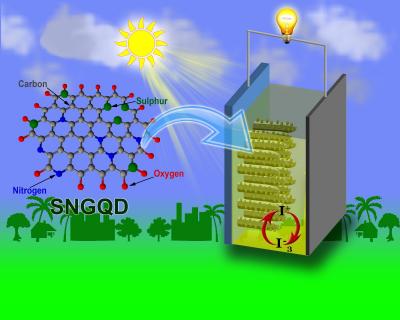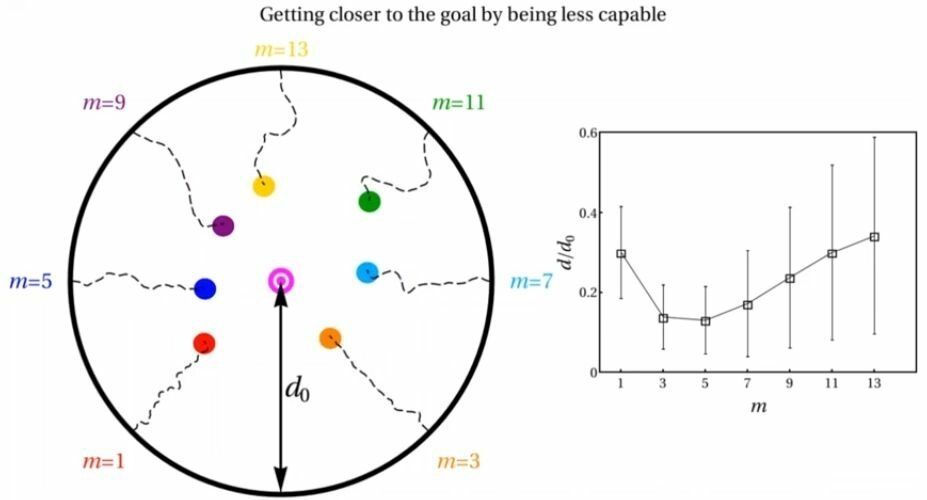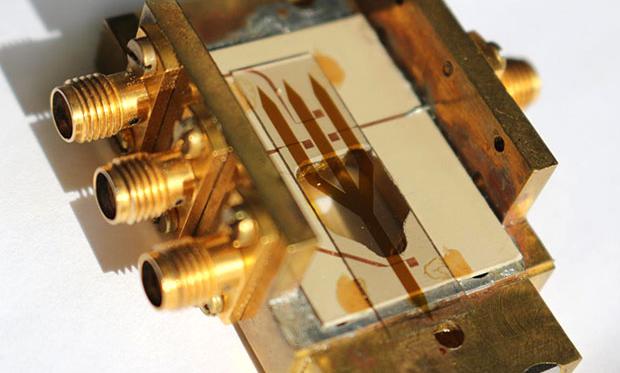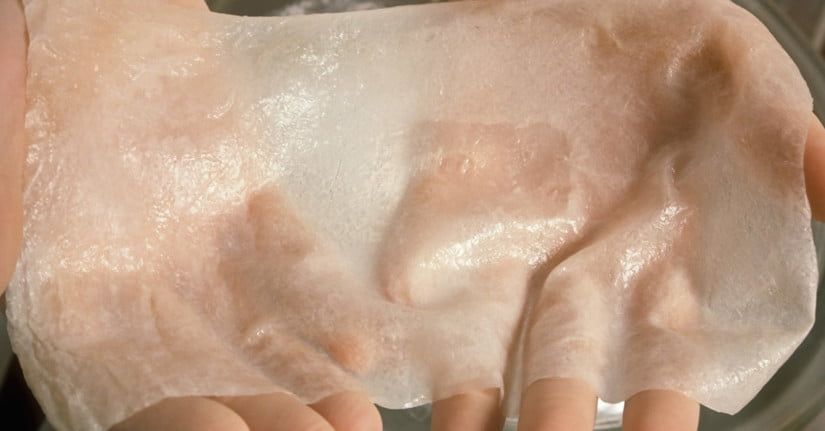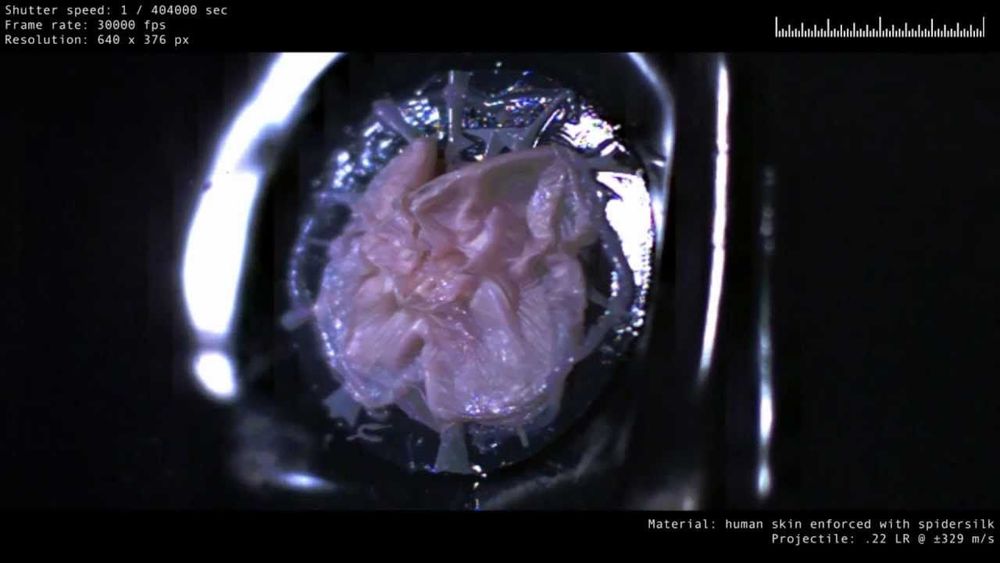Page 8159
Feb 6, 2019
Graphene quantum dots sensitized C-ZnO nanotaper photoanodes for solar cells application
Posted by Quinn Sena in categories: quantum physics, solar power, sustainability
In a paper to be published in the forthcoming issue in NANO, researchers from the National Institute of Technology, India, have synthesized blue-green-orange photoemissive sulfur and nitrogen co-doped graphene quantum dots (SNGQDs) using hydrothermal method. These GQDs showed strong UV-visible photoabsorption and excitation dependent photoemission which have low-cost, eco-friendly solar cell application.
Feb 6, 2019
Decentralized systems are more efficient at reaching a target when its components are not overly capable
Posted by Quinn Sena in categories: information science, robotics/AI, transportation
A team of researchers including Neil Johnson, a professor of physics at the George Washington University, has discovered that decentralized systems work better when the individual parts are less capable.
Dr. Johnson was interested in understanding how systems with many moving parts can reach a desired target or goal without centralized control. This explores a common theory that decentralized systems, those without a central brain, would be more resilient against damage or errors.
This research has the potential to inform everything from how to effectively structure a company, build a better autonomous vehicle, optimize next-generation artificial intelligence algorithms—and could even transform our understanding of evolution. The key lies in understanding how the “sweet spot” between decentralized and centralized systems varies with how clever the pieces are, Dr. Johnson said.
Feb 6, 2019
Move Over, Spintronics: Here Comes Magnonics to the Rescue of Electronics
Posted by Quinn Sena in categories: electronics, particle physics
New type of logic gate promises to completely replace electricity with magnetic spin waves for computation.
Feb 6, 2019
Ancient Druid Healing ‘Treatment’ Shows Potential For Killing Today’s Superbugs
Posted by Quinn Sena in category: biotech/medical
Faced with the rising threat of drug resistant pathogens, researchers are all but giving up hope that new treatments can be easily cooked up in the lab.
One recent discovery gives us hope that novel antibiotics are easier to find than we think, perhaps in plain sight right under our very feet. And it’s possible their curative properties could have already been recognised centuries in the past.
An international team of researchers based at Swansea University Medical School in South West Wales recently identified a new strain of bacterium in ‘healing soil’ taken from a site associated with ancient druidic rituals in Northern Ireland.
Continue reading “Ancient Druid Healing ‘Treatment’ Shows Potential For Killing Today’s Superbugs” »
Feb 6, 2019
Ebola Vaccinations Expanding in Central Africa
Posted by Quinn Sena in category: biotech/medical
The African country of South Sudan has started vaccinating front-line response staff with the Ebola Zaire vaccine candidate v920.
The vaccine’s producer, Merck, has given 2,160 doses of the vaccine candidate V920 (rVSV-ZEBOV) as part of preparedness measures to fight the spread of the Ebola disease, said the World Health Organization (WHO) in a press release on January 28, 2019.
This preventive effort is in reaction to South Sudan’s neighboring country the Democratic Republic of the Congo (DRC), which is now experiencing its 10th Ebola outbreak.
Continue reading “Ebola Vaccinations Expanding in Central Africa” »
Feb 6, 2019
Superhuman Skin Senses Sound Waves and Magnetic Fields
Posted by Quinn Sena in categories: biotech/medical, cyborgs, nanotechnology, wearables
Researchers have developed a new kind of sensor designed to let artificial skin sense pressure, vibrations, and even magnetic fields. Developed by engineers, chemists, and biologists at the University of Connecticut and University of Toronto, the technology could help burn victims and amputees “feel” again through their prosthetic skin.
“The type of artificial skin we developed can be called an electronic skin or e-skin,” Islam Mosa, a postdoctoral fellow at UConn, told Digital Trends. “It is a new group of smart wearable electronics that are flexible, stretchable, shapable, and possess unique sensing capabilities that mimic human skin.”
To create the sensor for the artificial skin, Mosa and his team wrapped a silicone tube with a copper wire and filled the tube with an iron oxide nanoparticle fluid. As the nanoparticles move around the tube, they create an electrical current, which is picked up by the copper wire. When the tube experiences pressure, the current changes.
Feb 6, 2019
Bulletproof Skin Made From Spider Silk Proteins And Human Skin Cells
Posted by Quinn Sena in category: futurism
Feb 6, 2019
Patient Tested for Ebola in Pennsylvania
Posted by Genevieve Klien in category: biotech/medical
A patient in Pennsylvania is being tested for a possible Ebola virus infection, according to news reports.
On Wednesday (Feb. 6), the Hospital of the University of Pennsylvania (HUP) said that it was testing the patient for the deadly virus out of “an abundance of caution,” according to local news outlet NBC 10 Philadelphia. Early test results suggest the patient has another condition that is the cause of their illness, but the hospital is taking precautions until the definitive results are in.
“A patient who met screening criteria for Ebola testing is currently being evaluated at HUP while tests to assess the patient’s condition are completed,” Dr. Patrick J. Brennan, chief medical officer at Penn Medicine, told told NBC 10.
Continue reading “Patient Tested for Ebola in Pennsylvania” »
Feb 6, 2019
DNA-Functionalized Metal–Organic Framework Nanoparticles for Intracellular Delivery of Proteins
Posted by James Christian Smith in categories: biotech/medical, nanotechnology
Due to their large size, charged surfaces, and environmental sensitivity, proteins do not naturally cross cell-membranes in intact form and, therefore, are difficult to deliver for both diagnostic and therapeutic purposes. Based upon the observation that clustered oligonucleotides can naturally engage scavenger receptors that facilitate cellular transfection, nucleic acid–metal organic framework nanoparticle (MOF NP) conjugates have been designed and synthesized from NU-1000 and PCN-222/MOF-545, respectively, and phosphate-terminated oligonucleotides. They have been characterized structurally and with respect to their ability to enter mammalian cells. The MOFs act as protein hosts, and their densely functionalized, oligonucleotide-rich surfaces make them colloidally stable and ensure facile cellular entry. With insulin as a model protein, high loading and a 10-fold enhancement of cellular uptake (as compared to that of the native protein) were achieved. Importantly, this approach can be generalized to facilitate the delivery of a variety of proteins as biological probes or potential therapeutics.
Proteins play key roles in living systems, and the ability to deliver active proteins to cells is attractive for both diagnostic and therapeutic purposes. Potential uses involve the evaluation of metabolic pathways, regulation of cellular processes, and treatment of disease involving protein deficiencies. (4−6) During the past decade, a series of techniques have been developed to facilitate protein internalization by live cells, including the use of complementary transfection agents, nanocarriers, (7−9) and protein surface modifications. (10−13) Although each strategy has its own merit, none are perfect solutions; they can cause cytotoxicity, reduce protein activity, and suffer from low delivery payloads. (14) For example, we have made the observation that one can take almost any protein and functionalize its surface with DNA to create entities that will naturally engage the cell-surface receptors involved in spherical nucleic acid (SNA) uptake. (13,15−17) While this method is extremely useful in certain situations, it requires direct modification of the protein and large amounts of nucleic acid, on a per-protein basis, to effect transfection. Ideally, one would like to deliver intact, functional proteins without the need to chemically modify them, and to do so in a nucleic-acid efficient manner.
Metal organic frameworks (MOFs) have emerged as a class of promising materials for the immobilization and storage of functional proteins. (18) Their mesoporous structures allow for exceptionally high protein loadings, and their framework architectures can significantly improve the thermal and chemical stabilities of the encapsulated proteins. (19−24) However, although MOF NPs have been recognized as potentially important intracellular delivery vehicles for proteins, (25−27) their poor colloidal stability and positively charged surfaces, (28,29) inhibit their cellular uptake and have led to unfavorable bioavailabilities. (30−33) Therefore, the development of general approaches for reducing MOF NP aggregation, minimizing positive charge (which can cause cytotoxicity), and facilitating cellular uptake is desirable. (34,35)

